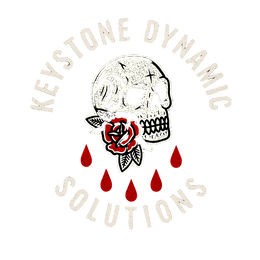TACTICAL MEDICINE LEVEL ONE
Course Overview
Tactical Medicine Level One is a foundational program designed to teach students how to provide immediate, lifesaving care in environments with limited resources, elevated stress, or ongoing threats. This course blends classroom instruction, practical application, and scenario-based training to build real capability—not just knowledge.
Students will learn to rapidly assess casualties, perform critical trauma interventions, and safely move patients to secure locations where they can receive additional treatment or be evacuated to a higher echelon of care.
Learning Objectives
Students will develop competence in the following areas:
Core Tactical Emergency Care
-
Understand principles of care in tactical, austere, or high-risk environments
-
Apply decision-making based on threat level, casualty condition, and resources
-
Perform assessments under stress, time pressure, and limited information
MARCH Assessment & Interventions
M – Massive Hemorrhage
-
Tourniquet mastery (one-hand, two-hand, under stress)
-
Identifying life-threatening bleeding
-
Wound packing with hemostatic agents
-
Pressure dressings, proper placement, reassessment
-
Improvised TQ considerations
A – Airway
-
Recognizing airway obstruction
-
Airway positioning (recovery position, chin lift, jaw thrust)
-
NPA sizing and familiarization
R – Respirations
-
Identifying chest wounds
-
Applying occlusive and vented chest seals
-
Burping chest seals
-
Recognizing potential tension pneumothorax
-
Treating compromised breathing in low-light/noise
C – Circulation
-
Assessing perfusion
-
Reading and interpreting blood pressure
-
Pulse checks (radial vs. carotid)
-
Recognizing compensated vs. decompensated shock
H – Hypothermia / Head Injuries
-
Hypothermia prevention in trauma
-
Building improvised hypothermia wraps
-
Managing heat loss from blood loss, exposure, and clothing saturation
Expanded Medical Skills & Drills
Vital Signs & Patient Monitoring
-
Respiratory rate assessment
-
Capillary refill
-
Skin signs (color, temperature, moisture)
-
Shock identification and management
Casualty Movement Techniques
-
Collar drags, strap drags, poncho/slick drags
-
Two-man and four-man carries
-
Improvised litter construction
-
Evacuation considerations under threat
Evacuation Planning (TACEVAC)
-
Establishing a casualty collection point (CCP)
-
Communicating patient status
-
Preparing a casualty for transfer
-
Basic MIST reporting
Medical Gear Setup & Optimization
-
Staging an IFAK for speed
-
What belongs (and doesn’t belong) in a trauma kit
-
Line gear vs. vehicle vs. home med kits
-
Common gear mistakes and failures
Capstone Scenario (End of Course)
Students will participate in graded or instructor-evaluated scenarios that include:
-
Multi-casualty assessments
-
Full MARCH treatment sequences
-
Problem-solving drills
-
Stress inoculation (noise, low light, chaos)
-
Drag/carry evacuation
-
Team-based casualty management and movement
This ensures students can apply everything learned in a realistic, dynamic environment.
Class Size
Maximum: 12 students
This ensures every student receives hands-on instruction and individualized feedback.
Course Schedule
Duration: Two 8-hour training days
Start Time: 0900 daily
Lunch: 1200–1300 (“Chow hour”)
Gear List
Required:
-
Note-taking materials
Optional (Recommended):
-
Personal IFAKs and medical bags
-
Any equipment you want to practice with
Course Instructors
-
Jon Webb
-
Alex Mattes













